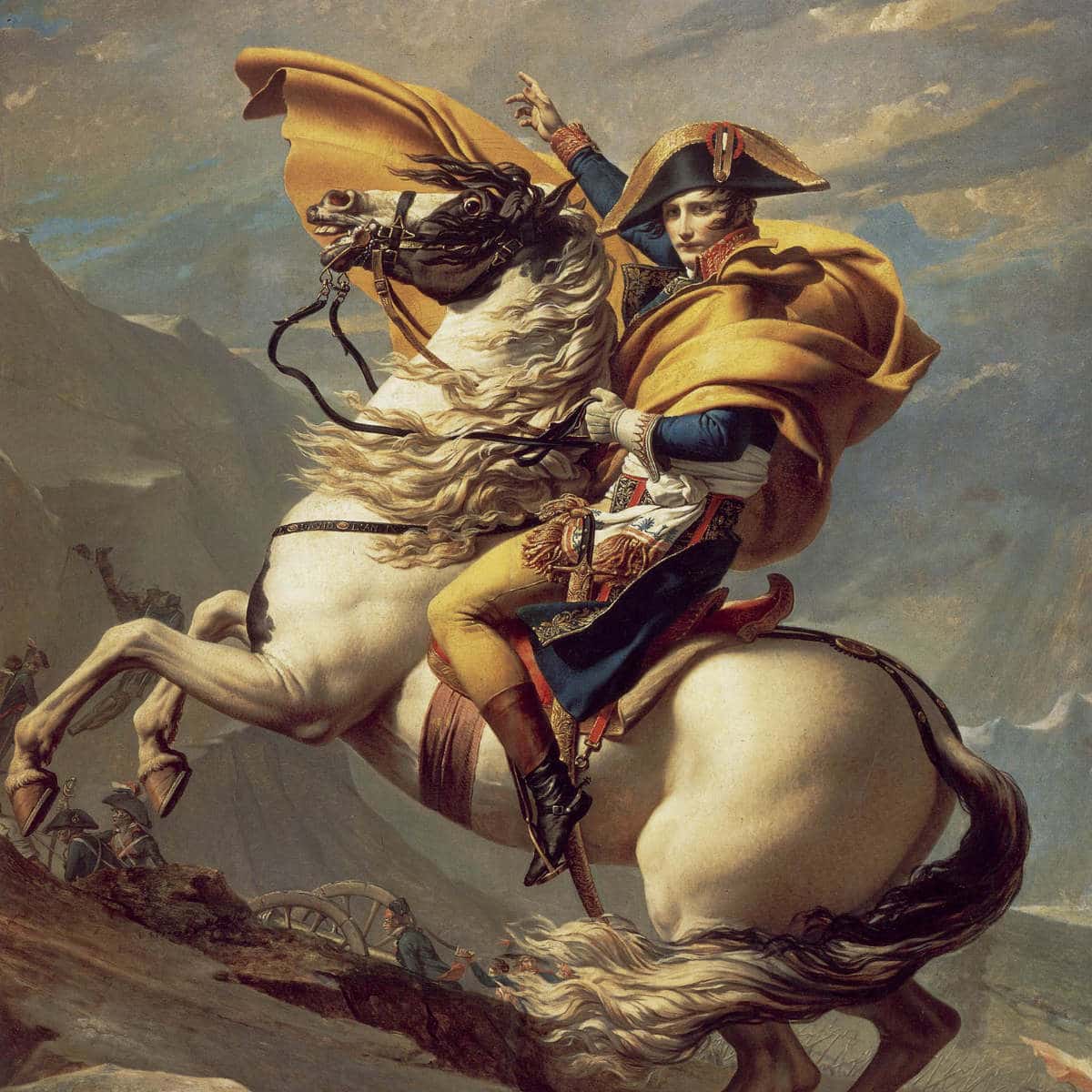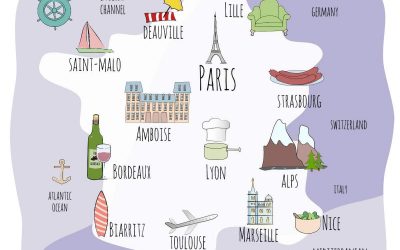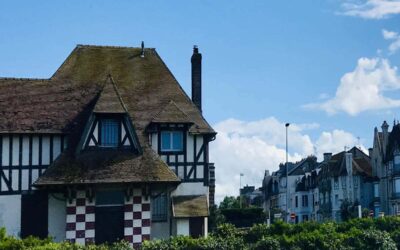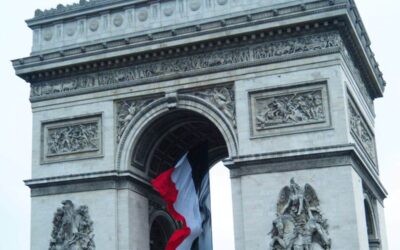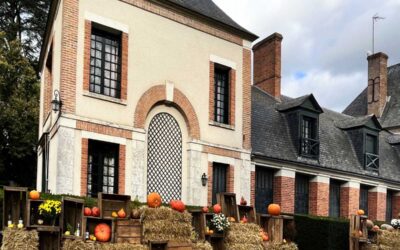Napoleon Bonaparte is one of those figures who remains instantly recognizable even centuries after his death. A formidable French military leader and tactician, he was first and foremost an astute politician, rising from obscurity to become Emperor of France.
In his time, he was adored by the French and much feared by his enemies. Today his legacy remains checkered even in France, with the positives and negatives outweighing each other depending on who you talk to.
So let’s get the facts about Napoleon Bonaparte, an icon in the history of France, for better or for worse. Allons-y!

| Quick facts | |
|---|---|
| Birth: | August 15, 1769 in Ajaccio, Corsica |
| Death: | May 5, 1821 (aged 51) on the island of Saint Helena |
| Parents and siblings: | Parents were minor aristocrats, with Napolean having 7 siblings. |
| Reign: | Emperor of the French (18 May 1804 – 6 April 1814) and (20 March 1815 – 22 June 1815) First Consul (13 Dec 1799 – 18 May 1804) |
| Marriage and kids: | Joséphine de Beauharnais from 1796-1810, no children; Marie Louise of Austria from 1810-1814, one son. |
| Famous for: | Becoming the Emperor of the French and conquering much of Europe |
1. He was born in Corsica.
Napoleon Bonaparte was born on August 15, 1769 in the town of Ajaccio in Corsica. He was the 2nd surviving child of Carlo (Charles) Marie Bonaparte, a lawyer, and Maria Letizia Ramolino, a minor aristocrat.
A small island just off of mainland France, Corsica has a culture of its own. At the time of his birth, the island was not quite French. Just before Napoleon was born, in 1768, it had been ceded to French King Louis XV by the Republic of Genoa (now part of Italy) to pay off some debts.
2. He had to learn to speak French.
In Corsica, Napoleon Bonaparte and his family spoke the local regional dialect, not French. Being next to the Italian Sardinia, the Corsicans at the time were very attached to their own traditions, language, and food. (And indeed, they remain so.)
Napoleon would not learn French until he went to collège (meaning “middle school”). He would keep his Italian accent and his poor spelling in French all his life.
3. He grew up during the French Revolution.
By the time Napoleon came of age, the French Revolution of 1789 was in full swing. He would join the army along with his brothers and work his way up the ranks.
4. His actual height was 5ft5in.
Napoleon’s official height (during his autopsy) was measured at 1.69m, which is about 5 foot 5 inches. While that was not particularly tall, it was not particularly short for that era either.
However, it was a good way for his enemies to mock him, as the Emperor and his army rampaged throughout Europe.
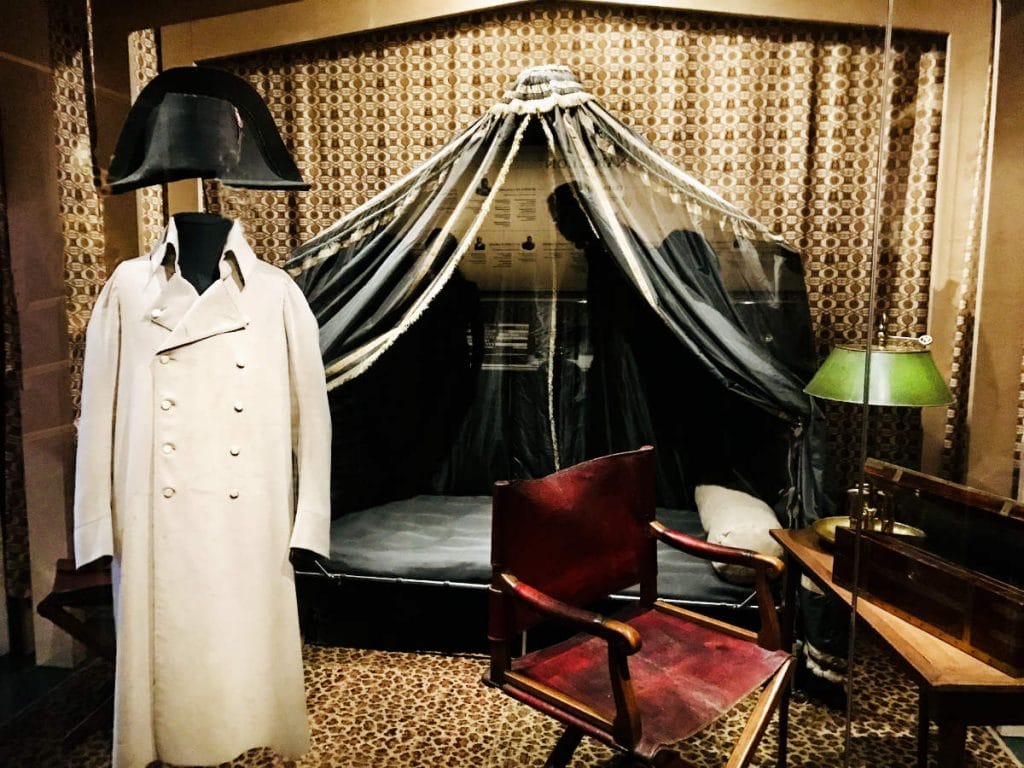
5. He made the bicorne hat famous.
The bicorne hat that Napoleon became famous for was another bit of propaganda. Initially meant to be worn from front to back by officers, Napoleon started wearing it sideways to show solidarity with more junior soldiers who wore it diagonally.
Interestingly, his English nemesis Admiral Horatio Nelson also wore a bicorne hat.
6. He wrote a romance novel.
Along with being military tactician, Napoleon was an aspiring author and a determined romantic. When Napoleon was 26 in 1795, he wrote Clisson et Eugénie, a brief romance novel of 17 pages.
7. He was engaged to Désirée Clary, future Queen of Sweden.
At the age of 26, Napoleon Bonaparte would meet Désirée Clary, the daughter of a minor noble, and would get engaged to her. His older brother Joseph would get engaged to her older sister Julie.
Napoleon would soon break off the engagement though, once he met Josephine, a woman he would fall madly in love with.
Don’t feel bad for Clary though. She would eventually met her future spouse, Jean Baptiste Jules Bernadotte, another French general and politician who had also worked his way up the ranks along with Napoleon.
In August 1810, Bernadotte’s husband was elected heir to the throne of Sweden and Norway as King Charles XIV John and Désirée was crowned Queen. (The House of Bernadotte continues to rule Sweden.)
8. He met a widow named Josephine.
Born Marie Josèphe Rose Tascher de La Pagerie on 23 June 1763 on the island of Martinique, Josephine was the daughter of the owner of a sugar cane plantation.
Josephine would move to France to marry her 1st husband Alexandre de Beauharnais, with whom she had two children. Her husband was an aristocrat who was guillotined during the Reign of Terror.
Josephine was also held for execution, but managed to secure her release. She met Napoleon on October 15, 1795, as a rather impoverished widow with two young children.
9. He married Josephine de Beauharnais (1st wife).
Napoleon was madly in love and would hurriedly break off relations with Désirée and marry Josephine de Beauharnais on 9 mars 1796, just a few months after meeting her.

On their certificate, the couple falsify their age to erase their 6 year age difference. Josèphine makes herself four years younger and Bonaparte eighteen months older. (French birth and marriage certificate tracking is very good however, and the difference was well known.)
10. They were happy living in Château Malmaison.
By all accounts, Josephine and Napoleon were very happy in their early years. She purchased a small country house outside of Paris called Château Malmaison in 1799, while Napoleon, still only a general in the army, was off fighting in Egypt.
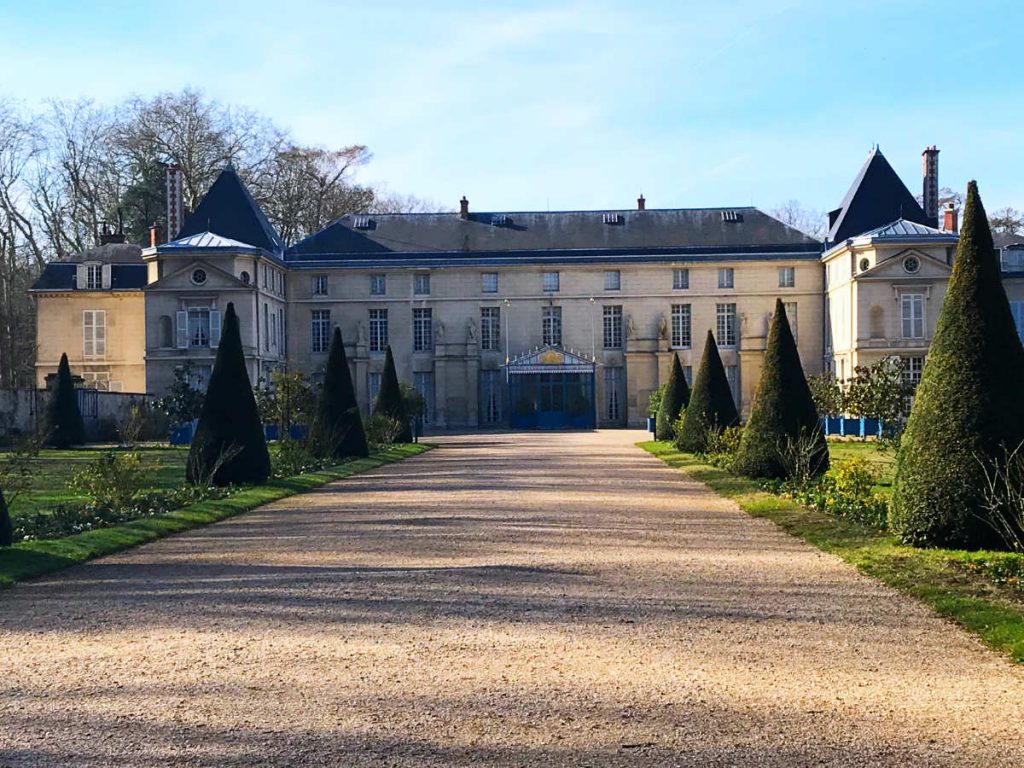
But Napoleon was not pleased. The property was far more than he wanted to spend. And plus it did not look like a house meant for royalty.
It was a home that she loved however, and Josephine’s daughter Hortense (from a previous marriage) would later say that it was their “delicious spot”. But things were about to change.
11. He became First Consul of France in 1800.
By 1800, Napoleon Bonaparte would be firmly in charge of Paris and France. After rising through the ranks, he nominated as First Consul of France (similar to President of France.)

12. He declared himself Emperor of the French.
In 1804, Napoleon was “voted” Emperor of the French. When Napoleon Bonaparte took control, he decided to strip back some of the Assemblée Nationale’s powers and consolidate his own.
The French revolution was over, and France once again had a monarch. Napoleon was not content however, just being Emperor of France, he wanted all of Europe.
13. He was crowned at Notre Dame de Paris.
Most French monarchs were crowned at the Cathedral of Reims, however Napoleon Bonaparte decided to do things differently.
Among the other grand cathedrals in France, he decided to be crowned at Notre Dame de Paris as a break from the ancien régime and also to demonstrate to Parisians that it was now he who was in charge.
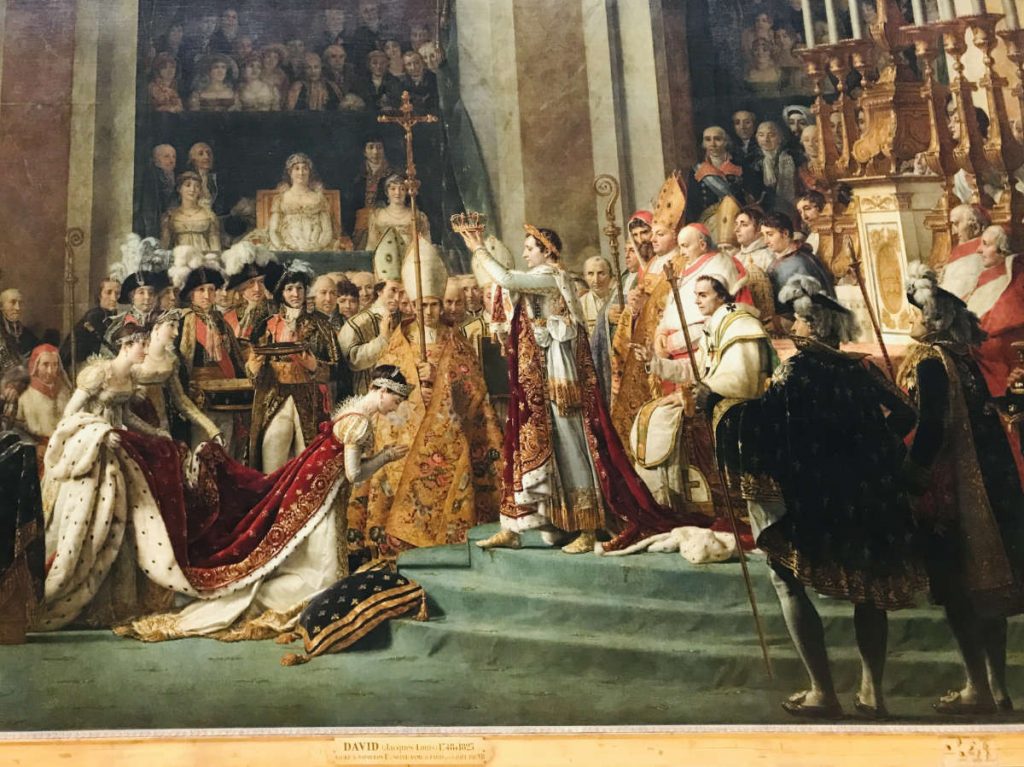
One of the largest paintings in the Louvre Museum is the Consecration of Emperor Napoleon Bonaparte and the Coronation of his wife Joséphine as Empress.
Completed in 1807 by Jacques-Louis David, his official artist, it depicts the coronation of Napoleon at Notre-Dame de Paris, after Napoleon declared himself Emperor.
A copy of the painting by the same artist hangs in the Palace of Versailles. There are a few “creative liberties” that have been taken by Napoleon and his painter, most notably the addition of his mother, who is sitting on a throne in the center watching.
She had not attended, but Napoleon asked for her to be painted into the tableau anyway.
14. His Mother Letizia Bonaparte hated his wife.
As emperor, Napoleon created a courtesy title for his mother as Madame Mère (literally, “madam mother”).
If you are wondering why Napoleon Bonaparte’s mother would miss his coronation as Emperor, there was a very good reason: his mother hated his wife Josephine and so refused to attend as she didn’t want to watch Josephine crowned Empress.
Letizia Bonaparte was generally quite unimpressed that her son had married a woman 6 years older than him, who was seemingly unable to give him children.
A mother of 13 children herself, she would continue to push Napoleon to divorce Josephine and remarry to produce an heir.
15. He won many famous battles.
Napoleon was known for his military might and innovative tactics. He would traverse the Alps to conquer and pillage large parts of Italy, Austria, Egypt, and other parts of Europe and Africa.
Some of his most famous victories in battle include:
- Battle of the Pyramids, 1798 in Egypt
- Battle of Marengo, 1800 against Austrian troops
- Battle of Austerlitz, 1805 against Russian and Austrian troops
- Battle of Jena-Auerstedt, 1806 against Prussian (German) troops
- Battle of Friedland, 1807 against Prussian (German) troops
16. He had 7 brothers and sisters.
By the time Napoleon was an adult, he had 7 surviving brothers and sisters. As he conquered his way through Europe, he would place them on the vacant thrones available to consolidate his power.
He placed his siblings as follows (from eldest to youngest):
- Joseph – King of Naples, and then King of Spain. He reluctantly abdicated in 1813 and retired in the U.S.
- Lucien – Prince of Canino and Musignano. Lucien rebelled against Napoleon much of his life, but did try to help his brother regain power when Napoleon was in exile.
- Elisa – Princess of Piombino and Lucca and Trand Euchess of Tuscany.
- Louis – King of Holland (1806-1810), and Comte de Saint-Leu.
- Pauline – Princess of Guastalla. Pauline was Napoleon’s favorite sister.
- Caroline – Grand Duchess of Cleves and Berg and later Queen of Naples.
- Jerome – King of Westphalia and Prince of Montfort. The youngest, Jêrome was only 16 when he joined Napoleon’s army.
Many of these titles disappeared after Napoleon was defeated, but each of his siblings and their descendants are retained their title of French Prince and Princess as part of the Imperial family.
It was Napoleon’s sister Caroline Bonaparte and her husband Joachim Murat who purchased and renovated the Palais de l’Elysées as their base in Paris, which is today the official residence of the President of France.

17. His Royal residences were fit for a King.
As Emperor, Napoleon Bonaparte decided that he needed a home that matched his status. The Palace of Versailles, which only 15 years earlier was associated with Louis XVI and Marie Antoinette and their excesses, would not do.
He decided to make the Château de Fontainebleau his base instead, distancing himself from the excesses of the previous royal house.
“The true home of kings, the house of ages.”
Emperor Napoleon Bonaparte about Chateau de Fontainebleau
Fontainebleau was the historic seat of former French kings like François I, before Versailles became Versailles, so Napoleon wanted to associate himself with that château. Napoleon had the entire Château refurbished, and added a throne room for himself.
And for a power base in Paris, he made the Palais des Tuileries his official residence in Paris, even installing the Mona Lisa in his bedroom. He also began renovating a northern gallery at the Tuileries which also connected to the Palais du Louvre.
18. He instituted the Napoleonic code.
It was under Napoleon that France got the Code Civil de France (also known as the Code Napoleon) that guaranteed personal liberties, the equality of citizens before the law and the secularity of the Church.
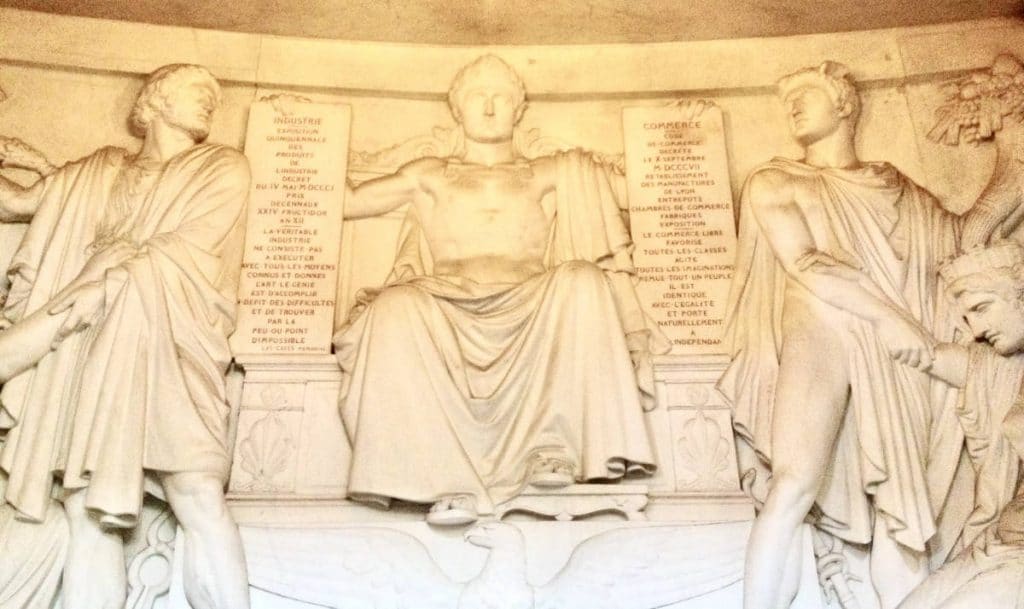
This was a new legal code for France which replaced a complex pre-revolution system. The Napoleonic code detailed everything from the rights of individuals and families to property and criminal conduct.
It wasn’t perfect, women were still considered property, but it established certain basic rights, including the right to work, where a feudal system existed before.
He also set up governing bodies that still exist today, like the Conseil d’État (meaning “Council of State”) that are both a legal adviser of the executive branch and the highest Supreme Court for administrative justice.
19. He was a colonialist.
At the same time as he was establishing a civil code in France, he also brought back slavery in France’s colonies.
As part of the Declaration of the Rights of Man and Citizens, slavery was abolished by the French Revolutionaries in 1794 as part of their quest for equality. During its history, France had settled several colonies in the Caribbean and Americas, including Haiti, where a large number of slaves were retained.
However, Napoleon Bonaparte revoked that decree in 1802. At the time, he was still married to Josephine, who had grown up and benefited from the slave system.
France would finally re-abolished slavery in the colonies in 1848 with a general and unconditional emancipation. But not until making Haiti pay substantial reparations, that are still having consequences today.
20. He changed the French National Anthem.
Napoleon Bonaparte disliked the French national anthem, La Marseillaise because of its association with the Revolution since he fancied himself Emperor.
He replaced it with a song called Le Chant du Départ as the official French national anthem. (The Marseillaise was restored, removed, and restored several times before finally being restored after WWII.)
21. He put in place education reforms.
In order to create a new class of leaders, Napoleon reorganized France’s education system. He started primary schools and created a secondary school system (called lycées).
He created separate schools for girls (whose education was not a priority until then), although much of the girls’ schooling focused on domestic skills.
The schools for both boys and girls did however focus on learning numbers, writing, and language. More advanced subjects like mathematics, history, geography, physics and botany were also taught.
22. He created labor reforms.
As part of the response to peasants who led the revolution, Napoleon establish a system of labor reforms and a labour court known as the Conseil de Prud’hommes.
Smaller labor courts had existed in Paris before in certain industries, but under Napoleon, this became nationwide and gave employees some recourse against unjust practises.
The Prud’hommes exists in France to this day. Disputes between employer and employee can be taken to Prud’hommes a council of experts will assess the situation, and advise any penalties and reconciliation necessary.

23. He instituted military reforms.
Napoleon carried the idea of merit and fairness into his armies as well. Where before promotions were only given to nobility, under Napoleon’s army hard work and bravery were rewarded.
This idea of gaining rank based merit, instead of nepotism, is what we expect today.
24. He got rid of the metric system.
Gabriel Mouton, a church vicar in Lyon had invented the metric system in 1670. French scientists at the Academy of Sciences of Paris refined it in the 1790s, and it was officially adopted by the French government under the revolutionists in 1795.
Napoleon, however, was not convinced. In 1812, Napoleon abandoned the metric system and largely let people use whichever measures they wanted.
He did let it continue to be taught in school, and it was eventually reinstated in 1840.
25. He gave Jewish citizens full rights.
For centuries, the Jewish people were discriminated against in various parts of Europe. They were made to live in special neighbourhoods, banned from certain professions, and restricted from their synagogues.
Napoleon made Jews full citizens of France, ending all those restrictions, with all the same rights as Catholics. He had also written about the idea of a Jewish homeland in Israel.
26. The Louisiana purchase was his idea.
In 1762, King Louix XV had signed the Treaty of Fontainebleau where where France ceded the State of Louisiana to Spain.
In 1800 Napoleon regained ownership of Louisiana as part of his project to restablish colonies in the Americas. France had already lost Quebec at that point, and had turned its attention further south.
In 1803 however, after a failure to control much of the land, Napoleon would finalize the Louisiana purchase to the United States of America. In return for $15 million dollars, or approximately $18/square mile, the U.S. acquired the territory of Louisiana.
That territory almost doubled the size of the United States, adding the equivalent of 13 states to the Union. Napoleon, on the other hand, could now concentrate his forces and focus on an enemy closer to home, the British.
27. He fought many battles against the British.
With the British islands being right across the English Channel from France, the British were watching Napoleon rampage through Europe with nervousness.
“Between France and England, the best thing is the English Channel.”
Famous quote about France and England
For several years, French and British ships would skirmish on the high seas. Napoleon had ideas of invading Britain, and once it became obvious that that was not going to possible, he tried to blockade the UK by restricting trade.
The British succeeded in forming an anti-French coalition consisting of Austria, Russia, Sweden, and Italy, but it was a tenuous coalition.
28. He lost the Battle of Trafalgar.
One of the largest early defeats that Napoleon suffered was in the Battle of Trafalgar in 1805.
Although, the English admiral Nelson lost his life, the French lost 21 of 33 ships and many troops. Following the battle, the British Royal Navy had the upper hand and Napoleon abandoned any plans to invade England, turning to mainland Europe instead.
Just 3 months later, on December 2, 1805, would be Napoleon’s greatest victory, when he defeated the combined Austrian and Russian armies in the Battle of Austerlitz. Today the Gare d’Austerlitz, a metro station in Paris, remembers that famous victory.
29. He got rid of the French Revolutionary Calendar.
During the revolution, the revolutionaries in charge decided to come up with a new republican calendar. Each day in the new French Revolutionary Calendar was divided into 10 hours, each hour into 100 minutes, and each decimal minute into 100 seconds.
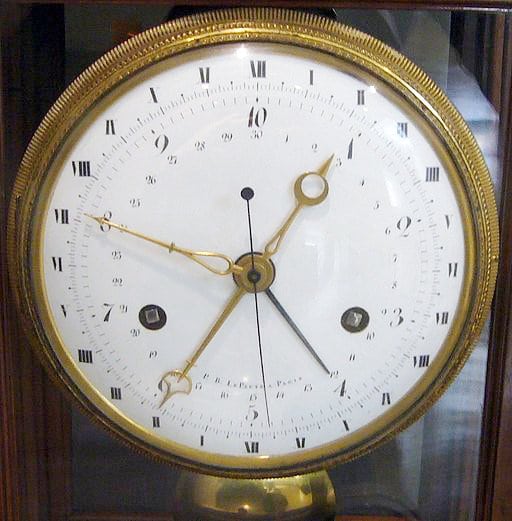
By the time Napoleon Bonaparte became First Consul of France in 1799, the French Revolutionary Calendar had already been in effect for 6 years. Since he had a habit of going around conquering his European neighbors, the new calendar was exported to other countries under French rule, including parts of Belgium, Netherlands, Germany, Switzerland, and Italy.
The week was now 9 days long, instead of 7 and people had to work a lot longer before a weekend. And there were plenty of other problems.
Napoleon decided he had bigger fish to fry than to convince local populations that the French Republican calendar was a fabulous idea. He finally abolished the calendar on 9 September 1805, with a Décret Impérial.
30. His religious reforms involved kidnapping the Pope.
Napoleon was not a particularly religious man. Before the 1789 revolution, it was the King and the Catholic church that dictated the lives of ordinary people.
Along with deposing the nobility, the revolutionaries were also claiming lands and property of the Roman Catholic church in France, as belonging to the French state.
By the time Napoleon came to power, the role of the church in France was vastly reduced. You will notice in the painting of the coronation, it is Napoleon crowning Josephine, not the Pope, as he did not consider the Pope to be of a status higher than himself.
More than that, when Napoleon was actively campaigning in Italy, he defeated papal troops and took the Catholic Pope Pius VI as prisoner. Pope Pius VI was held in Valence where he died on August 29, 1799.
Napoleon signed the Concordat of 1801 to restore the place of the church to a certain extent, but without returning the lands.
Not content, when the successor Pope Pius VII tried to excommunicate him, Napoleon had him kidnapped as well and brought to Château de Fontainebleau where he would remain until Napoleon was defeated.
31. He instituted several public holidays in France.
Napoleon may not have been overly religious, but he did want to get the population on his side. In 1802, he established 4 religious days as national holidays, one for each season:
- Ascension in spring (May)
- Assumption in summer (August)
- All Saints in autumn (November)
- Christmas in winter (December)
32. He plundered artworks and the Rosetta stone.
Napoleon’s plundering across Europe and Egypt led to him “acquiring” a lot of artwork.
For example, one of his peace treaties compelled Italian cities to contribute pieces of art and heritage to Napoleon’s “parades of spoils”. These items were then placed the Louvre Museum.
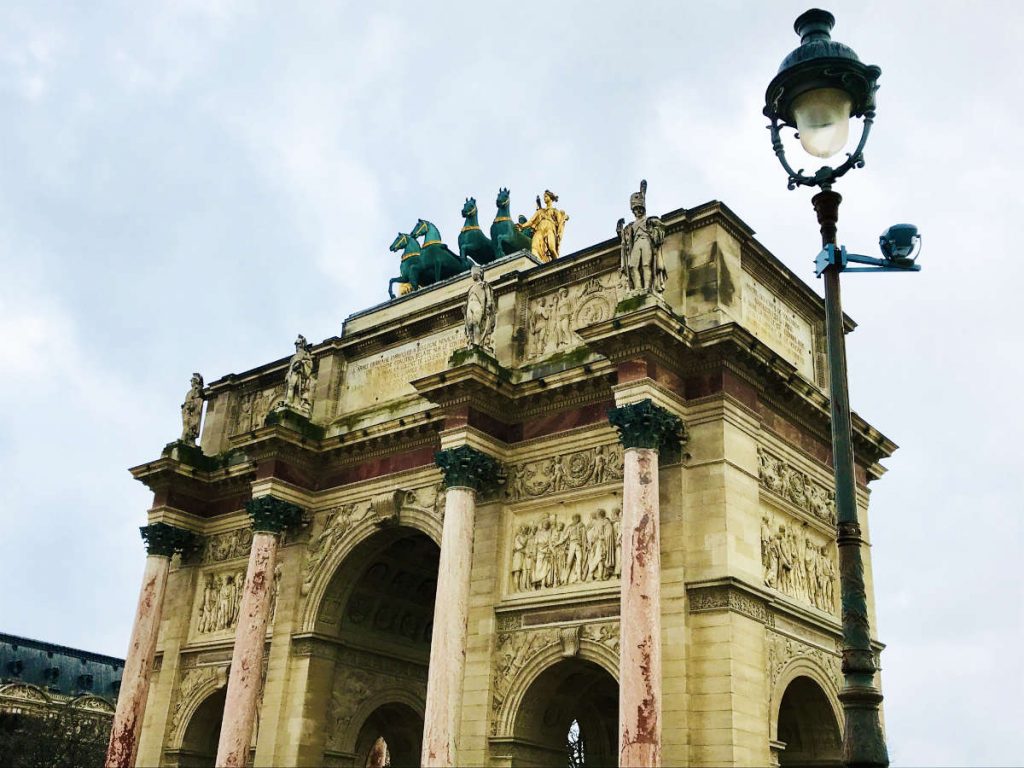
Originally the Arc de Triomphe du Carrousel in front of the Louvre museum had the 4 horses from Saint Marc’s basilica in Venice on top of them. Those were returned after the defeat of Napoleon, and copies installed.
It was also Napoleon’s soldiers that found the Rosetta stone in Egypt. This was taken by the British after his defeat and now sits in the British museum in London.
Other artworks acquired continue to remain in France. The Louvre was even briefly renamed Musée Napoleon, until his downfall.
33. He divorced Josephine because she couldn’t give him a child.
Caught up in politics and warfare, Napoleon and Josephine separated after 14 years of marriage.
Napoleon’s desire to have biological children combined with Josephine’s inability to conceive again, meant that the couple divorced on 15th of December, 1809.
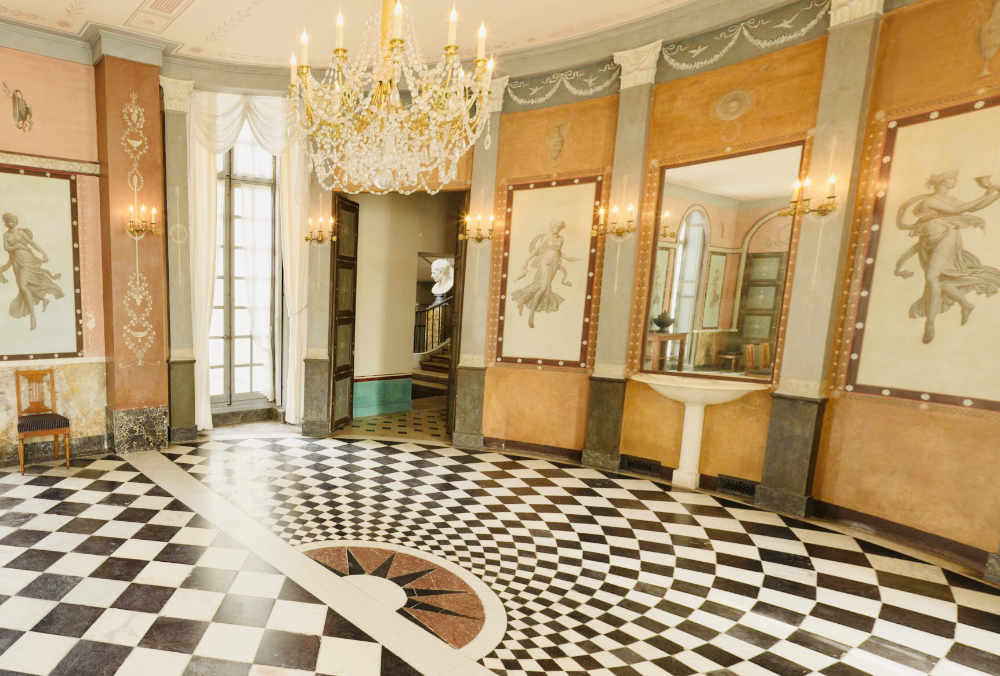
As part of the settlement, Josephine received Malmaison and an annual pension of 5 million francs. She continued to enjoy the home until her death in 1814.
34. He loved his stepson, Eugène de Beauharnais.
Josephine had two children from her 1st marriage, the older being Eugène who was adopted by Napoleon on 12 January 1806. However, he was excluded from succession to the French Empire.
He commanded the Napoleon’s army in Italy during the Napoleonic Wars, and was Viceroy of the Kingdom of Italy under his stepfather. He was given the title Prince of France and also Prince of Venise.
He would marry Princess Augusta Amelia, daughter of King Maximilian Ist of Bavaria, an ally of France. Their descendants would eventually marry into the various royal families of Europe, although Eugène himself refused all new titles and benefits after the divorce of his mother and Napoleon.
35. His 2nd wife was Marie Louise, Duchess of Parma.
Napoleon’s 2nd marriage was an arranged marriage, compared to the grand love he had for Josephine.
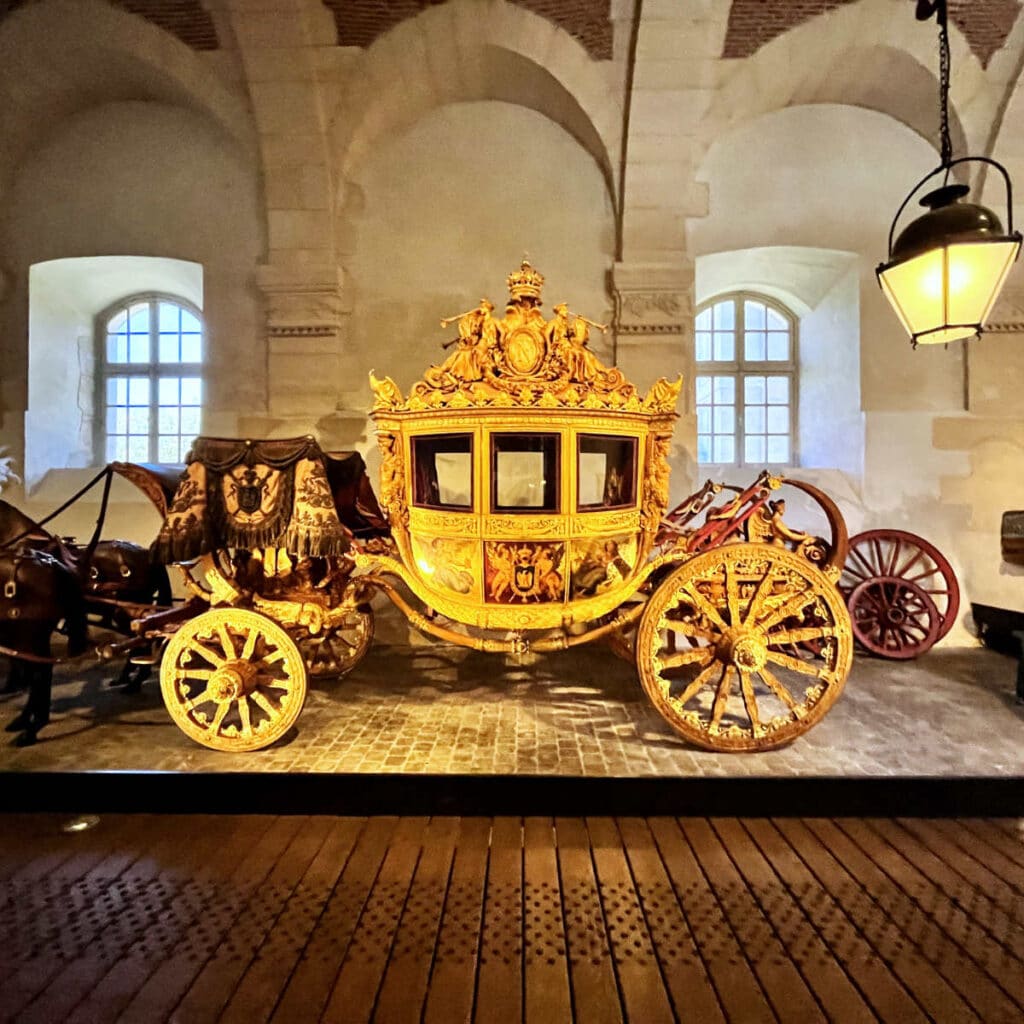
She was the eldest child of Francis II, Holy Roman Emperor and Emperor of Austria, and the marriage was meant to bring peace. They got married in 1810, the year after his divorce and she gave birth to a son on 20 March 1811.
However in 1812, after Napoleon’s failed invasion of Russia, Austria and other European powers resumed hostilities towards France.
36. His son Napoléon François Joseph Charles died young.
Napoleon’s son was named Napoléon François Joseph Charles Bonaparte. Born in 1811, he was only 3 years old when Napoleon abdicated the 1st time.
Napoleon intended to surrender in favor of his son, but since the child was so young, Napoleon II only “ruled” for a few weeks.
He moved to his mother’s native Vienna in Austria and died young of tuberculosis at the age of 21 in 1832, some 11 years after his father’s death.
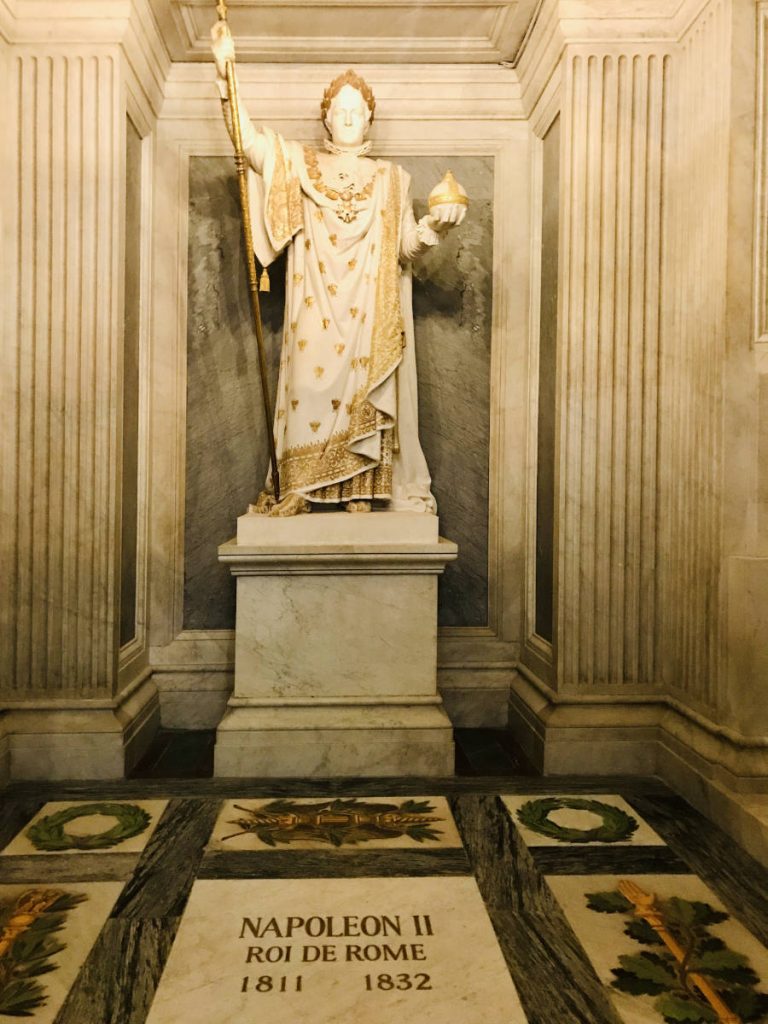
Napoleon II was buried in a tomb in Les Invalides, with the title of King of Rome that his father had bestowed upon him. The tomb of his father stands a few feet away.
37. His step-daughter Hortense de Beauharnais would give him an heir.
It would be Napoleon’s step daughter Hortense who would leave the most lasting legacy. The daughter of Josephine from her 1st marriage, she would marry Napoleon’s brother, Louis Bonaparte.

So she was not only Napoleon’s step-daughter but also his sister-in-law. She was initially reluctant, but ceded to Napoleon’s wishes in 1802 at the age of 19.
Louis Bonaparte would be made King of Holland in 1806, making Hortense queen. They disliked each other, but managed to produce 3 sons. It would be their 3rd son who would go on to be Emperor Napoleon III of France.
38. He commissioned the Arc de Triomphe in Paris.
The Arc de Triomphe on the Champs Elysées, as well as a 2nd one that is standing in front of the Louvre, were both commissioned by Napoleon Bonaparte in 1806 to commemorate his victories.
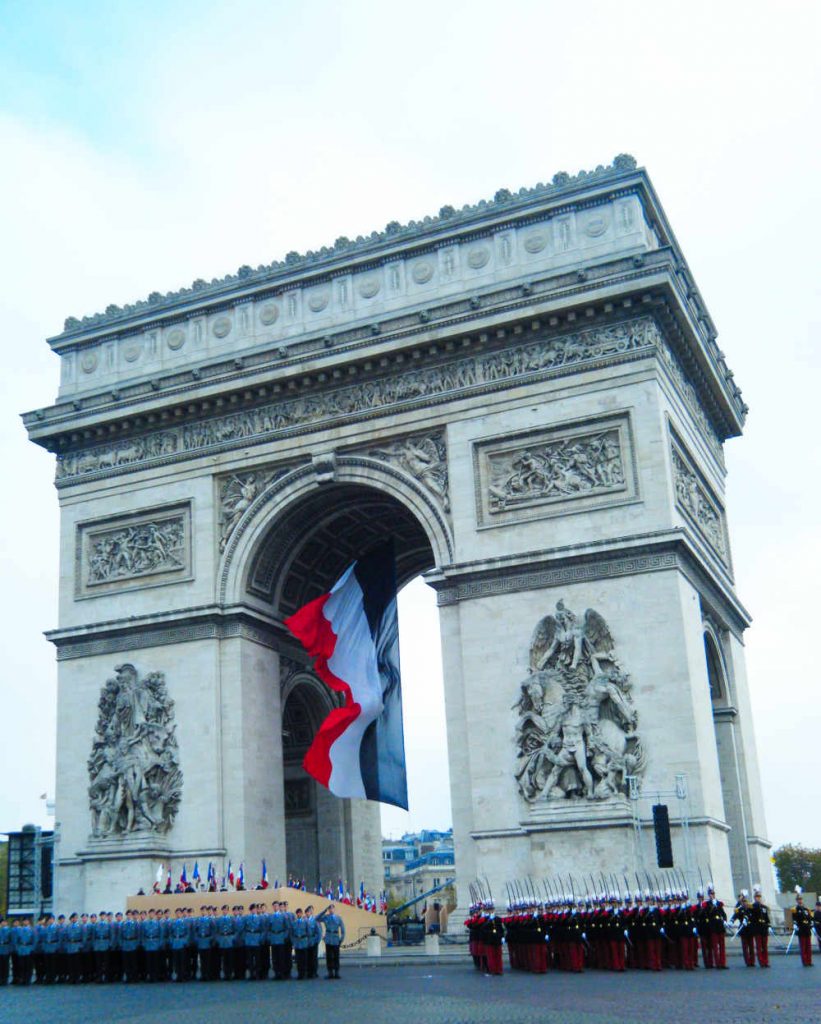
His defeat by the British meant that he never saw it finished. It was finally completed in 1836, and become a rallying point for both French and foreign armies.
39. He fought a disastrous battle against the Russians.
In 1812, Napoleon launched an invasion against the Russians, as a premptive strike against a possible Russian alliance with England.
His army was badly defeated by the cold and Russian troops and had to retreat. Napoleon had now succeeded in uniting much of Europe uniting against him.

40. He lost the Battle of Paris.
By 1813, the Austrian, Prussian, Russian, and other armies began invaded France on its northern border. The Battle of Paris was fought on March 30, 1814.
After a day of fighting in the suburbs of Paris, the French surrendered on March 31, before Napoleon could reach the capital.
41. His 1st exile was to the island of Elba.
With the French army overrun, Napoleon signed his surrender at the Château de Fontainebleau in April 1814. He initially abdicated in favour of his 3-year-old son on April 4. The Allies rejected this offer, forcing Napoleon to abdicate unconditionally on April 6.
He was exiled to the island of Elba. His favorite sister Pauling and his mother joined him during his exile to keep him company.
42. He made a comeback called “The Hundred days”.
But Napoleon was not done plotting. On 26 February 1815, when the British and French guard ships were absent, he slipped away on board the French brig Inconstant with some 1,000 men and landed at Golfe-Juan, between Cannes and Antibes, on 1 March 1815.
He avoided much of royalist Provence by taking a route through the Alps to head back to Paris with his army. That route today is marked as the Route Napoléon.
His return to power from eleven months of exile, lasted a period of 110 days.
43. He was defeated at the Battle of Waterloo.
On June 15, 1815 began the Battle of Waterloo on the northern border of France, in Belgium.
The coalition consisted of soldiers from the United Kingdom, the Netherlands, Hanover, Brunswick, and Nassau, under the command of the the English Duke of Wellington and Prussian Marshal von Blücher.
At day’s end, the war-weary French army had disintegrated. Napoleon instead of remaining in the field, returned to Paris to try to regain military and political support from the war-weary French.
44. His abdication restored the Bourbon monarchy.
Right in the garden entrance of the Palais de l’Elysées, home of the French President, is the desk that Napoleon Bonaparte used to sign his abdication and surrender to the British, along with a copy of the letter.

Napoleon abdicated on 22 June 1815 in favour of his son Napoleon II, now 4 years-old.
However the UK-Prussian coalition insisted on the Bourbon dynasty being restored, with Louis XVIII as King. He was the younger brother of Louis XVI who had survived the revolution, after the death of the King and Queen Marie-Antoinette.
45. He hoped to retire in America.
When Napoleon signed his abdication letter, he was actually hoping to be able to move the United States.
On 25 June, 1815 Napoleon left Paris for the final time and after staying at Château Malmaison, and left for the coast hoping to reach the United States of America. (Josephine had already passed away by this time, dying in 1814.)
46. Exile and mysterious death on the island of Saint Helena.
Napoleon was caught by the British, who feared another resurrection, and was exiled to the island of Saint Helena. In 1821, this is where he died under rather mysterious circumstances.
The British doctors treating him said he died of stomach cancer, while a local Corsican doctor blamed it on gall bladder problems and ulcers caused by stress.
Napoleon was also known to have carried a vial of poison at times. He died on May 5, 1821 at the age of 51.
47. Initial burial in Saint Helena.
He was initially buried on St. Helena, before being exhumed 19 years later.
“I wish my ashes to rest on the banks of the Seine among the people of France whom I so much loved“.
Napoleon Bonaparte’s last will and testament
Decades after Napoleon Bonaparte died in exile, he remained quite popular in France. During royal restoration, King Louis-Philippe decided to bring his body back from Saint-Hélena to be buried in Paris according to his wishes.
He was given a state funeral in 1840, and his body was kept in the Invalides until a tomb fit for an Emperor could be built.
48. His tomb is at Les Invalides in Paris.
It would be in 1861 that Napoleon was finally laid to rest in Les Invalides by his nephew Napoleon III, receiving the highest of honors as Emperor of France buried under the Dome of Les Invalides.
The sarcophagus was put up on a green granite pedestal and contains six coffins all nested within each other. One made of iron, another of mahogany, two others of lead, one of ebony and finally the last one of oak.
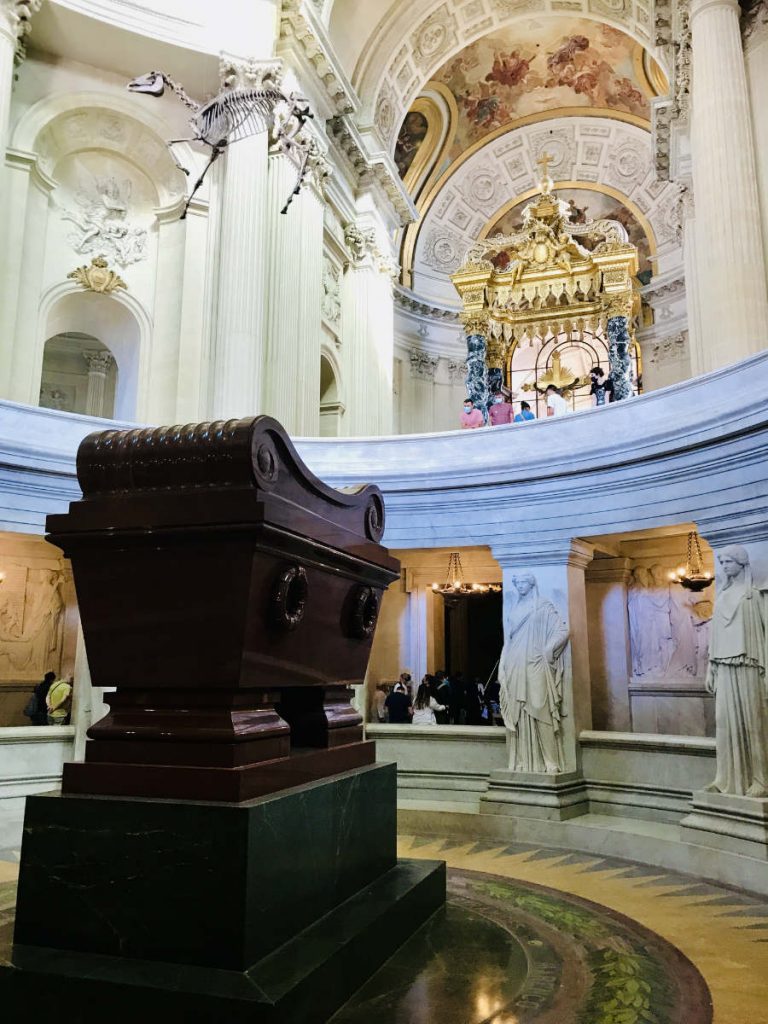
Records show that Napoleon was buried in his Colonel’s uniform (of the cavalry of the Guard) which bears his sash of the Légion d’Honneur. His famous hat, the sideways bicorne, rests on his legs.
Around the tomb, carved into the walls are the ten bas-reliefs sculpted by Pierre Charles Simart between 1846 and 1853, retracing the
achievements of the Consulate and the Empire. They include Napoleon often shirtless with him featuring:
- the code civil
- with a crown of sunshine (meant to evoke the Sun King)
- dressed as a Roman Julius Caesar
49. His nephew became Emperor Napoleon III.
After the death of Napoleon Bonaparte, the British restored the French monarchy by putting on the throne a series of minor members of the House of France, the last of whom would be Louis Philippe (known as the last King of France).
Napoleon’s nephew however, Charles Louis Napoléon Bonaparte was waiting in the wings. He was the son of Louis Bonaparte and Hortense de Beauharnais and would become known as Napoleon III.
After a couple of “small” revolutions and abdications in between, he finally seizes power in 1851 and declares himself Emperor.
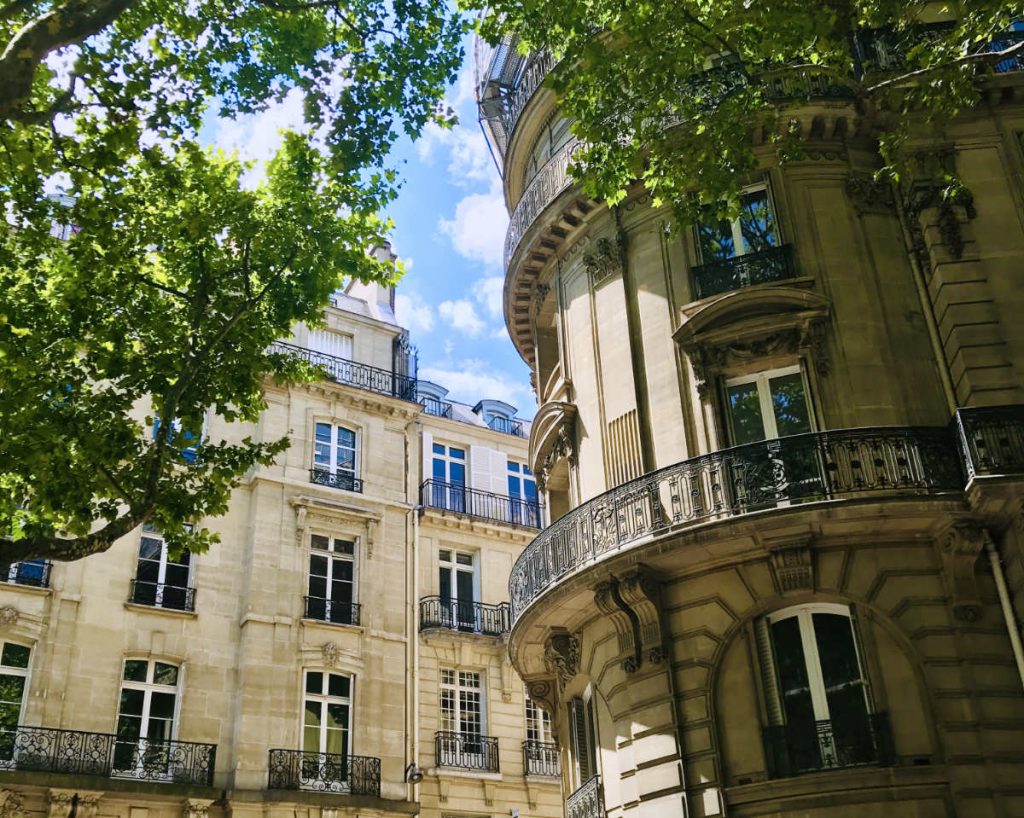
He was a generally efficient monarch, working to moderize France, boosting the economy and expanding the merchant navy. And he gave carte blanche to an architect named Baron Haussman to redraw the map of Paris, by razing much of the center to the ground, and building much of the Paris we see today.
Napoleon III’s reign would not last however. Prussia (as Germany was then known) was gaining in power and the British did not trust the nephew of the enemy who had brought them so many years of war. Short of allies and growing older, he would surrender in 1870 to the Prussians and die in Germany.
With a series of Germanic invasions, a couple of World Wars, and many other upheavals, there would never again be a King (or Emperor) of France.
50. Bonaparte’s family lives on today.
Although, Napoleon’s direct line ended when his son died, there are plenty of Bonapartes who have descended from his siblings.
One of the claimants to the French throne, Prince Jean-Christophe Napoleon Bonaparte, the great-great-great nephew of Napoleon Bonaparte, was in the news in 2019 for getting married at Les Invalides in Paris.
He happened to be marrying Olympia, the great-granddaughter of Karl I of the Austrian Habsburgs, a descendent of Napoleon Bonaparte’s arch enemy.

If you enjoyed that article, you may like to read more about French history here. A bientôt!
